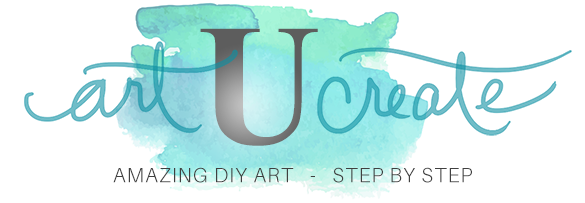Oil or acrylic? Why not both? With this canvas bird painting tutorial, you don’t have to choose. Take advantage of the rapid drying of acrylic which allows you to make fast progress, and the slow drying of oil which allows you to blend and get lovely softness and color so luminous that your art practically glows.

In the video tutorial below, you’ll see the process of using acrylic to paint the beginning layers of a sparrow on a branch. Once the layers of acrylic have built up a nice base coat, you can paint on top and refine the scene with easy to blend oil.
It’s the best of both worlds.
With their small size, beautiful colors and interesting feather patterns, birds make fascinating subjects for painting. Choose your favorite, and feature it as the star of your own original piece of canvas bird art.
If you like painting animals, you might also like this acrylic painting tutorial that shows how to paint a realistic bunny on canvas or this tutorial showing how to paint a fox.
gather these supplies
- wood panel or canvas with a smooth texture
- brushes suitable for acrylic and oil paint (a wash brush, flat shader, round brush, and small liner brush)
- acrylic paint (a good quality brand such as Golden or Liquitex)
- acrylic glazing liquid (such as Golden Glazing Liquid) to improve blending of acrylic colors and slow drying)
- oil paint
- baby oil (for rinsing oil paint from brushes)
- Weber Liquiglaze Natural (for creating glazes, thinning, improving gloss & flow, and speeding up the drying time of oil paint)
- rags
- brush cleaner for acrylic and oil paint
step 1: find reference photos for your bird painting
The better your reference photo, the easier it will be to create a stunning piece of art. Look for high resolution images that have great color, detail and lighting.
For the bird painting in this tutorial, I used this tree sparrow photo by Mr.Coffee from Shutterstock–

And this cherry blossom branch photo by Viktorypix also from Shutterstock–

Spend time studying your reference photos before you pick up your brush. Decide which elements you want to use and which aspects you want to change. Take some creative liberties so that your art will be uniquely your own.
step 2: set up your work space
If you have an easel, that’s fabulous. If not, place your canvas on a table. If working on a table, it’s helpful to insert pushpins on the back side of your canvas in each corner. That will raise your canvas up off your work surface so that you can easily paint the sides (especially helpful if you have a gallery wrap canvas).

step 3: choose non-toxic, cruelty-free supplies
Opt for painting supplies that do not harm animals or yourself in the process of creating your beautiful bird art. For brushes, synthetic brands will work well for applying both oil and acrylic. You can clean your brushes afterwards with a good artist soap like this or this one.
When working with oil paint, skip the toxic chemical solvents and go with safer alternatives that work just as well. Instead of turpentine, use baby oil! Baby oil is basically just mineral oil, and it works amazingly well for rinsing brushes used for oil paint (it’s the equivalent of water for acrylic). It’s also inexpensive (a generic brand is fine) and easy to find at practically any store in the baby section. Fill a small jar with a few inches of baby oil, and rinse your oil brushes in it when switching between colors, or when switching between one brush and another.
For creating glazes and speeding up the drying time of oil paint, avoid toxic solvents like Liquin that are dangerous to breathe, and other alkyd products that are flammable, and go with a non-toxic, non-flammable, soap-and-water-cleanup glaze like this one. For acrylic paint, this Golden glazing liquid works incredibly well for slowing the drying time of acrylics and making transparent washes and glazes.
Choose safe alternatives to colors that are known to be carcinogenic. Example—choose “cadmium free” yellows and reds instead of their cadmium containing counterparts.
Wear gloves—-not only to protect your manicure, but to protect your skin from absorbing any unnecessary chemicals as you paint.
step 4: paint your masterpiece!
Watch the video to see the process of how to paint a bird on a branch using both acrylic and oil paint.
tips
- If your canvas feels rough after applying the first layer of acrylic, use a 220 grit sandpaper to sand the surface to make it smooth before applying additional paint layers.
- To keep your oil paint from drying out on your palette when you are not using it, store it in your freezer.
- Take a break from painting every half hour or hour. Step back and look at your canvas from a distance and view it from different perspectives.
- Use watercolor pencils to lightly trace your design on to your canvas. The watercolor pencil lines will dissolve when the wet paint is applied on top, leaving no trace of your guidelines. (Draw with the same color watercolor pencil as the color of paint that you plan to use–if you are planning to paint a bluebird, use a blue watercolor pencil to trace the outline. If you are painting a sparrow, use gray or brown watercolor pencils.)
Enjoy painting!
artUcreate is an Etsy, Michael’s, and Amazon Associates LLC affiliate.





